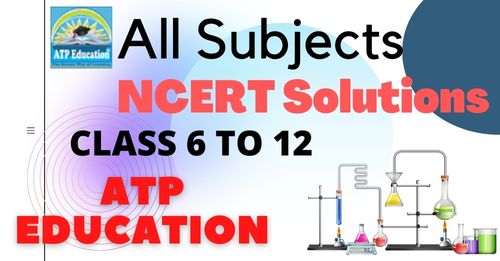1. Chemical Reactions And Equations Science Class 10 In English Medium Ncert Book Solutions Additional -Questions
1. Chemical Reactions and Equations : Additional -Questions Science class 10th:English Medium NCERT Book Solutions
NCERT Books Subjects for class 10th Hindi Medium
Chapter 1. Chemical Reactions and Equations Additional -Questions: NCERT Book Solutions for class 10th. All solutions and extra or additional solved questions for 1. Chemical Reactions and Equations : Additional -Questions Science class 10th:English Medium NCERT Book Solutions.. All ncert books and cbse syllabus are solved chapter by chapter and also exercise within chapter and exercise solved by our expert in Hindi and English Medium for studends.
NCERT books solved questions and answers 1. Chemical Reactions and Equations, 1. Chemical Reactions and Equations solved questions and answers, 1. Chemical Reactions and Equations in english Medium, NCERT Book Solutions for 10 Science, chapter and excercise for Science-Additional -Questions, NCERT Book Solutions for class 10th, Science, Science class 10th, class 10th Science, All solutions and extra or additional solved questions for 1. Chemical Reactions and Equations, Science 1. Chemical Reactions and Equations, Additional -Questions, Science class 10th, English Medium NCERT Book Solutions
1. Chemical Reactions and Equations
Additional -Questions
Important Question Answers:
Q1. Write the general Name of CaO (s).
Ans: The general Name of Calcium oxide is Quick lime.
Q2. By which physical states, reactant and product are shown in a chemical reaction.
Ans:
(s) – For Solid
(g) – For gas
(l) – For liquid
(aq) – For Aqueous (Solution)
Q3. What happens when a magnesium ribbon is burnt in presence of Oxygen?
Ans: when a magnesium ribbon is burnt in presence of Oxygen, it gets converted to magnesium oxide.
Q4. Why is respiration considered an exothermic reaction? Explain.
Ans: Respiration takes place in our body cells regularly. This is an exothermic reaction. After breaking down of obtained carbohydrate from food converts into glucose, which provides energy to our body combine with oxygen. Hence the exothermic reaction gives energy in very large quantity so the respiration is also called an exothermic reaction.
Q5. Name the reaction in which two or more than two reactants form one product to combine each other. Write a balance reaction of this reaction.
Ans: Combination reaction.
CaO(S) + H2O(l) → Ca(OH)2(aq)
(Quick lime) (Slaked lime)
Q6. A solution of a substance ‘X’ is used for white washing.
(i)Name the substance ‘X’ and write its formula.
(ii)Write the reaction of the substance ‘X’ named in (i) above with water.
(iii)Write it’s an industrial use.
(iv)Name the substance which chemical formula is same as ‘X’.
Ans:
(i)‘X’ is Calcium oxide Or Quick lime. Its formula is CaO.
(ii) CaO(S) + H2O(l) → Ca(OH)2(aq)
(Quick lime) (Slaked lime)
(iii)In cement industry.
(iv)Marble.
Q7.Write two reactions name which are the effects of oxidation reaction in everyday life.
Ans:
(i) Corrosion.
(ii) Rancidity
Q8.A white substance, which is insoluble in water, is formed by reaction between sodium sulphate and barium chloride.
(i)What is called such insoluble substance?
(ii)Name this white substance.
(iii)Show the products of this reaction with writing a balance equation.
(iv)What is called this type of reaction?
Ans:
(i)Precipitate.
(ii)Barium sulphate (BaSO4 )
(iii)
(iv)Double displacement reaction.
Q9. What is rancidity?
Ans: Some fat or oil containing food materials are left for a long time, they are oxidized and become rancid. Their smell and taste change. This change is called rancidity.
Q10.With which gas, Oily or fat containing food like chips are packed to kept for a long time. Why?
Ans: Nitrogen, preventing from getting oxidized.
Q11.What do you mean by a precipitation reaction? Explain by giving examples.
Ans: Such a reaction which produces insoluble substance. This formed insoluble substance is known as a precipitate. Any reaction that produces a precipitate is called precipitation reaction.
For example: A white substance of Barium sulphate, which is insoluble in water, is formed by reaction between sodium sulphate and barium chloride.
Q12.A shiny brown coloured element ‘X’ on heating in air becomes black in colour.
(i)Name the element ‘X’.
(ii)Name the black coloured compound formed.
Ans:
(i)‘X’ is Aluminium.
(ii)Al2 O3
Q13. Write the methods to prevent iron articles from corrosion.
Ans:
(i)By galvanization.
(ii)Painting and greasing.
(iii)Oiling and by plastic coating.
Q14.A reddish brown element X on heating converted into a black coloured compound Y, which turns phenolphthalein pink.
(i) Identify compound ‘Y’.
(ii) Identify the element ‘X’.
(iii) Give inter conversion reaction of X and Y.
Ans:
(i) compound ‘Y’ is copper oxide.
(ii) Element ‘X’ is copper.
(iii) 2 Cu + O2 → Heat 2Cuo
Q15.What is rancidity? Give four methods to slow down it.
Ans: Some fat or oil containing food materials are left for a long time, they are oxidized and become rancid their smell and taste change .this change is called rancidity.
ATP Educationwww.atpeducation.com ATP Education www.atpeducation.com
ATP Education
See other sub-topics of this chapter:
1. Chapter Review class 10 Chap-1. Chemical Reactions and Equations
2. NCERT Book Solutions class 10 Chap-1. Chemical Reactions and Equations
3. Exercise Chap. 1 class 10 Chap-1. Chemical Reactions and Equations
4. Additional -Questions class 10 Chap-1. Chemical Reactions and Equations
5. Assignment class 10 Chap-1. Chemical Reactions and Equations
Advertisement
NCERT Solutions
Select Class for NCERT Books Solutions
Notes And NCERT Solutions
Our NCERT Solution and CBSE Notes are prepared for Term 1 and Terms 2 exams also Board exam Preparation.
Science Chapter List
1. Chemical Reactions and Equations
2. Acids, Bases and Salts
3. Metals and Non-metals
4. Carbon and its Compounds
5. Periodic Classification of Elements
6. Life Processes
7. Control and Coordination
8. How do Organisms Reproduce
9. Heredity and Evolution
10. Light-Reflection and Refraction
11. Human Eye and Colourful World
12. Electricity
13. Magnetic Effects of Electric Current
14. Sources of Energy
15. Our Environment
16. Management of Natural Resources


